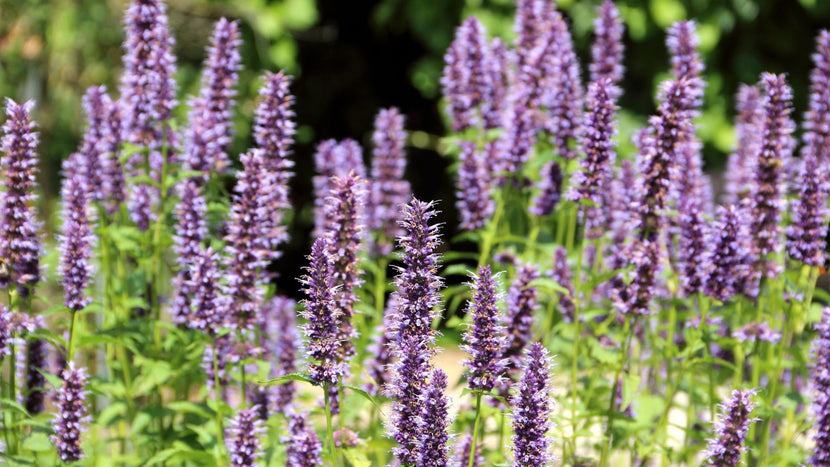How to Care for Agastache
Plant Guide

Caring for Agastache sun perennials is simple once the plant is established. They require little watering or fertilizing, and their resistance to drought and disease makes them very hardy in non-ideal conditions. Simply monitor your plants regularly to determine if they need extra attention.
Agastache plants are known for their long, purple flowers clusters that are long blooming from summer to fall. Additionally, they are known fort their aromatic foliage. While the foliage is traditionally deep green, there are some stand outs like the Golden Jubilee that features electric neon green foliage.
Ground Rules

Light
Although it can tolerate partial shade, Agastache will produce the most flowers in full sun.

Water
While settling in the garden, newly planted Agastache may need weekly watering to keep the soil moist and allow the roots to germinate. However, once it has established, Agastache are wonderfully drought tolerant and can go weeks without watering.

Soil
Agastache can tolerate a wide range of soils but grows best in neutral, well-draining soils that provide ample nutrients to the plant.

Food
Agastache do not require fertilization to ensure success. Too much fertilizations can reduce flowering and fragrance of the plant. If needed, we recommend fertilzing your plant with a natural compost.

Temperature
In colder temperatures, Agastache will likely not return year after year. It does best in temperate climates where it will reliably return as a perennial plant.

Toxicity
Agastache are not toxic to pets or humans! In fact, the plant is edible and can be used in tea.
When is the best time to plant Agastache?
Can you grow Agastache in pots?
Types of Agastache Plants
| Name: | Grow Zones: | Feature: |
|---|---|---|
| Black Adder | 6 - 9 | Blue-purple flower cluster |
| Blue Fortune | 4 - 10 | Cold Hardy |
| Golden Jubilee | 5 - 9 | Neon green leaves |
| Purple Haze | 6 - 9 | Deep purple flower clusters |
